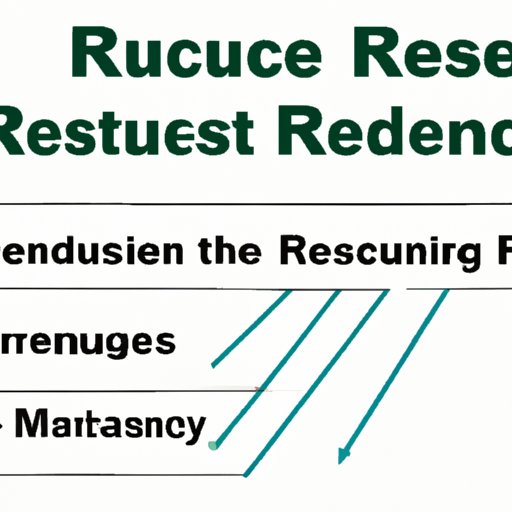
The Ultimate Guide to Resource Management: Understanding Its Importance and Best Practices
Resource management is a critical element to the success of any organization, regardless of industry or size. From allocating staff and budgeting funds to managing deadlines and completing projects on time and within scope, resource management plays a central role in ensuring organizational objectives are met. In this article, we will explore resource management, its best practices, tips for effective management, and why it matters so much for organizational success.
What is Resource Management?
Resource management is the process of effectively and efficiently allocating resources, such as personnel, funds, materials, and time, to achieve an organization’s goals. When executed successfully, resource management can help optimize an organization’s workflows, processes, and operations, ensuring project delivery and customer satisfaction.
Importance of Resource Management
Resource management is a critical function for organizations that want to optimize their resource utilization, enhance efficiency, and increase productivity. With effective resource management practices in place, organizations can reduce operational costs, avoid resource shortages, and minimize the risk of failed projects or initiatives. Effective resource management can also help organizations streamline their decision-making processes, enhance collaboration among teams, and ensure transparency and accountability across all functions.
Best Practices for Effective Resource Management
Let’s take a look at some best practices for effective resource management:
- Create a resource management plan: To effectively manage resources, you need to have a plan in place that defines objectives, timelines, and resources required for project completion.
- Define roles and responsibilities: Ensure that job roles and responsibilities are clearly defined and that each team member understands their role.
- Track progress: You need to have a method of tracking progress, which will enable you to make data-driven decisions and course-correct when necessary.
- Monitor resource utilization: Monitor your resource utilization to ensure that resources aren’t being burned out or underutilized. The goal is to optimize resource utilization by ensuring balance and proper distribution.
- Prioritize tasks: Prioritize tasks based on their importance, level of urgency, and available resources.
- Use technology: Use technology to track resource utilization, automate work processes, and streamline workflows where possible.
Maximizing Your Resources: Strategies for Effective Resource Management
Here are some practical tips for effective resource management.
- Balance resource allocation: Balancing the allocation of resources is important, so as not to overburden any one team or function.
- Track resource usage and availability: Keep a record of how much time your resources, such as employees and equipment, are being used and compare them to the amount of time they are available.
- Prioritize projects or initiatives: Prioritize projects based on their impact on the organization and the available resources so that the critical initiatives are executed first.
Why Resource Management Matters: Exploring the Impact on Organizational Success
Effective resource management can help a company improve its operational efficiency, optimize the use of resources, and enhance collaboration. Conversely, when resource management is not properly executed, it can lead to project delays, budget overruns, and even project failures. Mismanagement of resources can also lead to employee dissatisfaction, which in turn impacts productivity and quality of work delivered.

Case Study: Successful Resource Management in Action
A great example of an organization that has successfully implemented effective resource management practices is the Walt Disney Company. Disney’s resource management practices involve planning and managing budgets and schedules for its various productions, projects, and operations. Disney’s resource management strategy incorporates balancing resource allocation among different departments, tracking resource utilization and availability, and prioritizing projects based on their impact on the company.
Resource Management Tools and Software: A Comprehensive Review
There are various software and tools available in the market that can help organizations manage their resources more effectively. Some popular options include:
- Trello: Trello is a simple, user-friendly tool designed to help teams manage tasks and workflows effectively. It provides real-time updates, drag and drops functionality, and collaboration tools.
- JIRA: JIRA is a powerful tool designed for project management and agile software development. It offers resource allocation, customizable workflows and dashboards, and reporting tools.
- Workfront: Workfront is a cloud-based project management solution, designed to help organizations manage their resources, timelines, budgets, and workflows more effectively. It offers real-time data, automation features and integration with various other software tools.
- Monday.com: Monday.com is a collaboration and project management tool that offers a wide range of features to help manage tasks and workflows more effectively. It provides real-time collaboration tools, customizable templates, automations, and management tools.
- Asana: Asana is a cloud-based project management software that helps teams manage tasks more efficiently. It offers real-time updates, collaboration tools, and workflow automation tools.
Conclusion
Resource management is an essential element for any organization that wants to optimize resource utilization, reduce operational costs, and improve project delivery. By implementing best practices, prioritizing tasks, and leveraging technology to streamline workflows and automate tasks, organizations can achieve their objectives and drive success.




